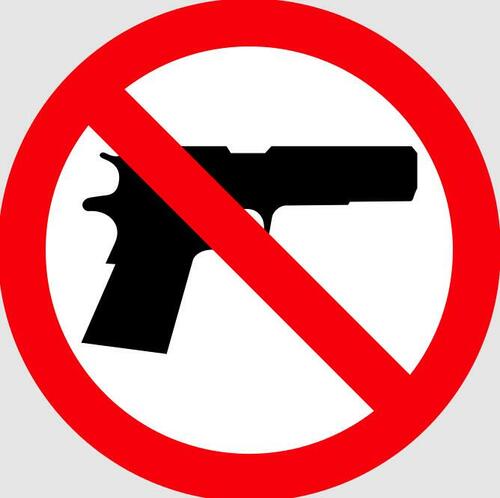Democrats’ Second Amendment ‘Syndrome’ Plan: Plotting The Next Big Fight Over Gun Rights
Below is my column in the Hill on the next round of litigation over the Second Amendment. New York and other states quickly moved to exploit the concurrence of Justice Brett Kavanaugh (who was joined by Chief Justice John Roberts) that state officials believe contains a loophole for greater gun limitations based not on the weapons but the places where they can be taken.
Here is the column:
In the movie “The Incredibles,” the villainous character “Syndrome” reveals a plan to make everyone a superhero. Syndrome’s motive is hardly altruistic: He hated superheroes and “with everyone super, no one will be.” Democratic leaders seem to be planning their own Syndrome plan for the Second Amendment — to make everywhere a special or “sensitive place” so that few places outside the home are protected by the constitutional right.
The recent decision in New York State Rifle & Pistol Association, Inc. v. Bruen was one of the most significant victories for the Second Amendment in the history of the Supreme Court. It was the latest defeat for the State of New York, which — having supplied a series of dubious state laws that have served to expand individual protections under the Constitution — has been the greatest gift to gun owners since the invention of the revolver.
Right on cue, New York Gov. Kathy Hochul (D) promised Syndrome-style legislation within an hour of the release of the Bruen decision. To make matters worse, Hochul went on television to say in a mocking tone that they would just come up with a long list of sensitive places.
Hochul and others are relying on a concurrence in Bruen by Justice Brett Kavanaugh, who was joined by Chief Justice John Roberts. Kavanaugh reaffirmed the language in the 2008 decision in Heller v. District of Columbia that the Second Amendment was “neither a regulatory straightjacket nor a regulatory blank check.” States and the federal government could still adopt some restrictions on firearms. He specifically noted that the list of “sensitive places” referenced in the earlier case was not “exhaustive.”
Kavanaugh’s limiting language was immediately taken as a license to bar guns by redefining places where they might be carried.
New York’s Concealed Carry Improvement Act passed 43-20 and has elements that are ripe for constitutional challenge. However, it was the list that was so striking; indeed, it is hard to come up with a place that would not be declared special or sensitive. The list would seem to cover most areas outside of the home, including government buildings; any location providing health, behavioral health or chemical dependence care or services; any place of worship or religious observation; libraries; public playgrounds; public parks; zoos; the location of any state-funded or -licensed programs; educational institutions both in elementary and higher education; any vehicle used for public transportation; all public transit including airports and bus terminals; bars and restaurants; entertainment, gaming and sporting events and venues; polling places; any public sidewalk or public area restricted for a special event, and protests or rallies. That includes simply passing through Times Square.
Montgomery County, Maryland, officials have proposed to bar the legal right to carry firearms “in or within 100 yards of a place of public assembly.”
Other states like California are moving to bar permitted gun owners from carrying guns into any school grounds, college and university campuses, government and judicial buildings, medical facilities, public transit, public parks, playgrounds, public demonstrations and any place where alcohol is sold.
These states believe they have an ally in Roberts. The chief justice has been criticized in the past for embracing rights while creating avenues for their circumvention. The most obvious example is his opinion in National Federation of Independent Business v. Sebelius, finding that the individual mandate of ObamaCare violated federalism but then saying that it did not matter if it is simply called a tax (which no party had done).
These states are now hoping Roberts and Kavanaugh will do the same thing with gun rights in staunchly defending the individual right to carry a gun unless states simply define a wide array of places as “gun-free.” It is not the gun but the place that’s driving the exclusion.
The problem is that Hochul and others may have been too open in gaming the opinion.
Roberts is the ultimate incrementalist and institutionalist. As shown in his sole concurrence in the abortion decision in Dobbs v. Jackson Women’s Health, he is not afraid to stand alone in seeking a moderate compromise. However, he is not someone who relishes being treated as a chump.
Simply listing most of Manhattan as a “sensitive place” will again push the constitutional envelope. It will force the court to again limit the authority of the states to shoulder the burden of balancing the individual right to gun ownership against the need to protect these places from the exercise of that right.
In answering that question, the court is likely to ask how statistically lawful gun permit owners have caused or materially increased the public safety risk in these areas. Studies have generally not shown a clear relationship between restrictive gun permit laws and a significant decrease in gun violence.
There is a clear majority on the court to give states and cities the power to impose reasonable background checks and gun limits for sensitive places. However, these states may again overplay their hand with excessive listings like the one in New York. Indeed, in Gov. Hochul’s case, she is playing poker with the cards facing outward.
When you say that you are going play these justices, you would be wise to heed Syndrome’s other advice: “You can’t count on anyone, especially your heroes.”
Tyler Durden
Mon, 07/18/2022 – 21:15

